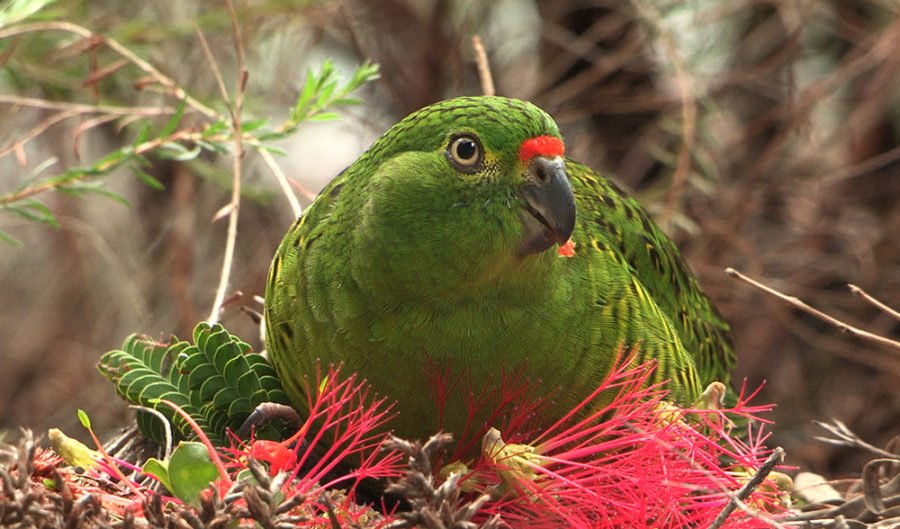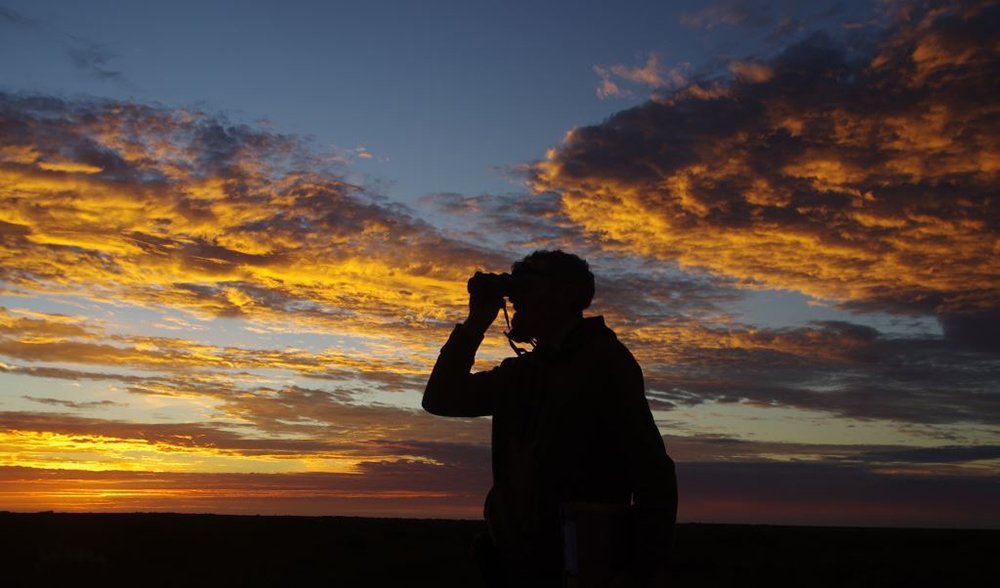Hope for endangered Aussie parrot

CRITICALLY ENDANGERED western ground parrots have been found in Western Australia’s Nuytsland Nature Reserve for the first time in 10 years.
It’s been a rocky road for the beautifully marked species, which has seen a dramatic decline in numbers since the introduction of cats and foxes on the mainland.
With a range once extending from the Dongara-Watheroo area, south-east of Geraldton, WA, through to Perth and from Augusta-Flinders Bay to Israelite Bay, the parrot’s distribution is now most likely restricted to just one site, Cape Arid National Park near Esperance.
The population of this WA endemic species was estimated to be less than 140 individuals, but a devastating few months has left surveyors uncertain as to just how many remain.
Raging bushfires swept through Cape Arid National Park in October and November last year, destroying 90 per cent of the species’ habitat.
Then, in another devastating blow, the two parrots captured late last year in a bid to start a breeding program developed a respiratory illness and died two months later.

Volunteer Boyd Wykes at Nuystland Nature Reserve during the survey. (Credit: Department of Parks and Wildlife)
Sounds of survival
However, amidst all the bad news, surveyors on Sunday found a beacon of hope when a high-pitched whistling broke the early morning silence – the unmistakable call of the western ground parrot.
“I certainly wasn’t expecting it – neither were my colleagues that were with me,” said Sarah Comer, Regional Ecologist for the WA Department of Parks and Wildlife. “And the great thing is that five of us heard birds that morning, so it was very reassuring – we were pretty excited,” she added.
The researchers were carrying out one of a number of listening surveys to determine the bird’s presence post-fire in Nuytsland Nature Reserve, just over 10km from the fire-affected area.
“There’s a high probability that they are actually birds that have been displaced by the fires,” Sarah said.
Due to the birds’ elusive nature, listening surveys are the main method of detecting western ground parrots in the wild, and surveys will continue into April. Several automatic recording units stationed in the reserve are also programmed to record for 30 minutes before dawn every day for up to three months.
The surveyors heard a number of calls in a single small area, but will not be able to estimate the surviving population until much more ground has been covered.
“It’s a huge area – we’re trying to survey habitat in over a hundred thousand hectares, so it takes a lot of time to get around,” Sarah said.
“We covered about 16km in the survey we’ve just done, and that’s just a drop in the ocean when you look at how big this place is.
“We’re hopeful that we’ll be able to get the captive program back on track, but obviously with such low numbers of birds, at the moment our priority is figuring out what’s left and conservation in the wild.”
RELATED CONTENT:

